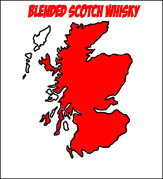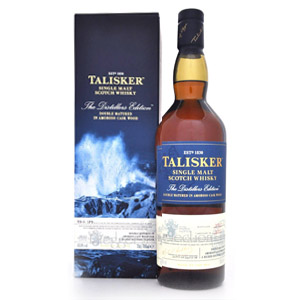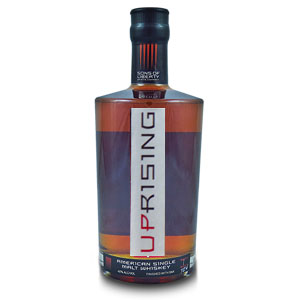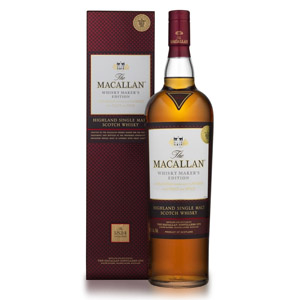Something about the Scottish sense of humor just can’t help itself, I guess. Pig’s Nose. Sheep Dip. Monkey Shoulder. Pig’s Nose is a blended scotch from Ian McCloud, makers of Smokehead, Sheep Dip, Isle of Skye, owners of the Glengoyne and Tamdhu distilleries, and the name behind, well, a bunch of other brands.
Unlike the other animal references, which are slang phrases that evolved from whiskeymaking, Pig’s Nose refers to the whisky being as “smooth as a pig’s nose”. I’ll have to take that one on faith, having never personally felt the nose of a pig. The blend contains 5 year-old grain whisky from Invergordon as well as 5 single malts (3 Speysiders, 1 Highland, and 1 Islay). The recipe has likely changed at least once, as another source refers to a Lowland malt as well. The blend was assembled by famous scotch whisky ambassador and blender, Richard Paterson aka “The Nose”. It’s bottled at 40% ABV and retails for a strangely wide range of prices, between $23 and almost $40.
Nose: Quintessential blended scotch: dry hay, lemon peel, and some faint peat that is on the maritime side (briny). Comes across a bit watery at this proof. A brief rest in the glass opens up more sweetness in the form of vanilla buttercream frosting.
Palate: Syrupy body. Mild tongue burn, and not as watery as the aroma suggested even at 40% ABV. Sweetness emerges first, with light toffee and white chocolate. Next, the grain appears in the form of fresh hay and puffed oats. Lastly, the peat leaves a twist of earthiness.
Finish: Short. The peat is more evident here, along with cocoa nibs, bitter charcoal, and walnuts. Fades quickly, leaving some sooty bitterness as the last note.
With Water: A sparse few drops of water have little to no apparent effect on the aroma. The palate seems more spirity (like vodka). Skip water here.
Overall: The addition of an Islay peat is no doubt intended to make this blend complex, but instead I find that it just distracts from the rather surprising purity of the grain and malt despite the (I’m assuming) young age. The finish is a bit of a disappointment… I expected it to be brief, but did not expect so much lingering acrid bitterness. I don’t know if that’s from the peat or not, but it’s a little unpleasant. The rest of the experience, though, is nice and certainly performs well for the price.
Speaking of price, it seems to vary. I gave this a “Try Before Buy” rating because it’s not as good as Bank Note 5 year, which is my benchmark for budget blended scotch. If you can only find it for above $30 a bottle, I would call this “Not Recommended”. In that case, try Bank Note or Cutty Sark Prohibition instead.









I just can’t see a reason for every buying a bottle like this? I assume most Old-Timers drinking cheap blends are content drinking Dewar’s White or Johnnie Walker Red, so what’s the point? Would you recommend this to a Scotch drinker over any of the cheapest single malts on the market, say Loch Lomand Original, Speyburn Brandan Orach, any Glen Moray Classic, Tomatin Dualchas, Deanston Virgin Oak, or even Finlaggan Old Reserve for peatheads. I’m sure I missed a few, but you get my point. Cheers!
“Ever”, not “Every” 🙂
I wouldn’t recommend this particular one, no, but there is a market for independent blended scotch (Bank Note 5 year being my go-to, or Great King Street: Artist’s Blend for more $$) – the taste profile of these whiskies (because of the added grain) does differ enough from straight single malt that some people might be “in the mood” for a blend when they aren’t for a malt. They may (speculative) perform better with ice, and are less likely to “take over” a cocktail with strong flavors. Artist’s Blend, in particular, is more nuanced than most single malts under $50. Still, it’s hard to make an impressive blend for a decent price, and most people would be better off going straight to the single malts and not looking back.
I recommend Pig’s Nose for people who are not fond of Scotch. That would be me. I like it very much! It is almost as if I am not drinking Scotch. Sooooo Smoooooth. And I have had the pleasure of actually touching a pig nose, and I dare say Pig’s Nose Scotch is smoother still.
So what is the point, you might be saying? Perhaps it is a good start of a pathway to indoctrinate Scotch eschewers into the world of Scotch.